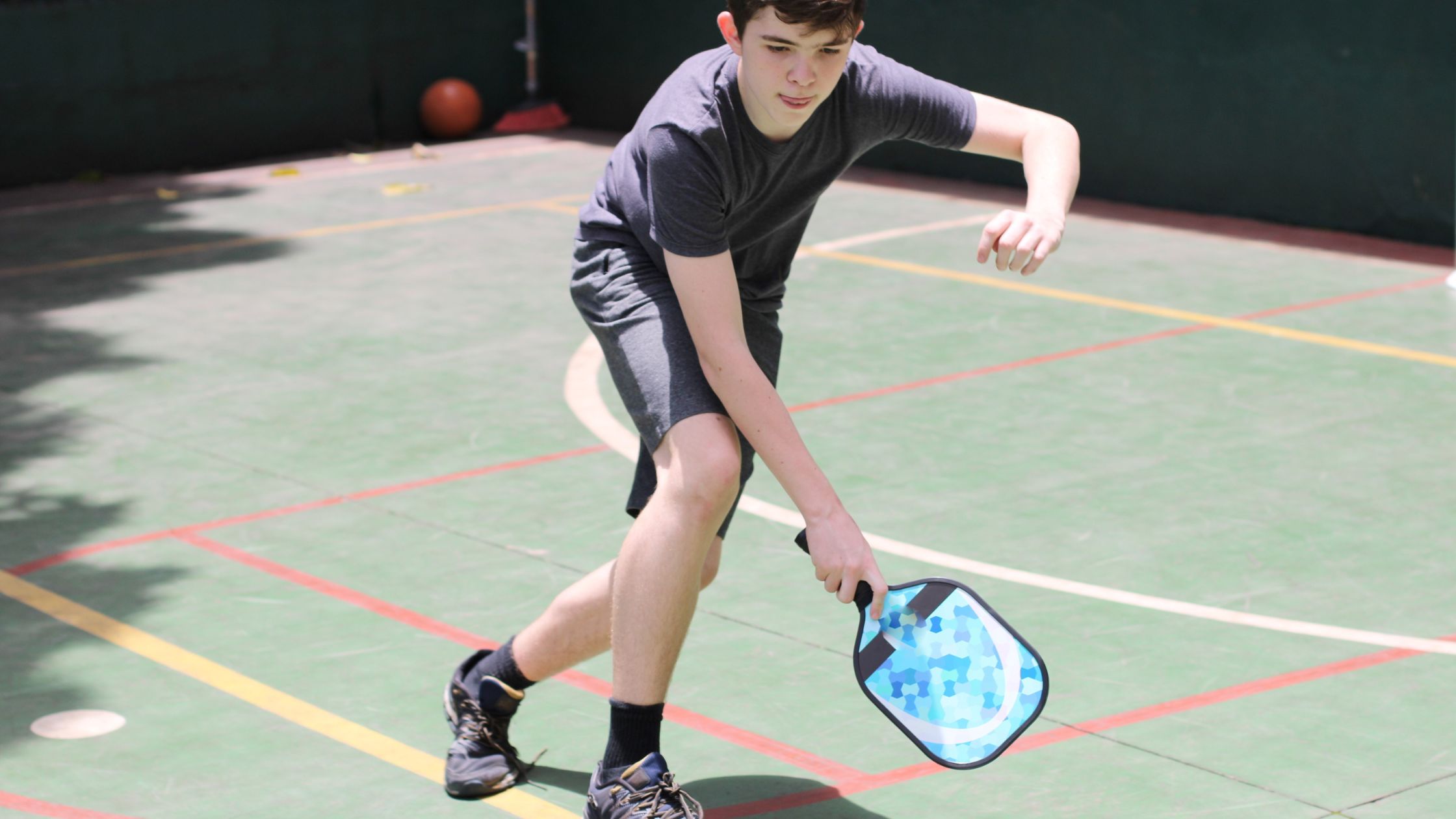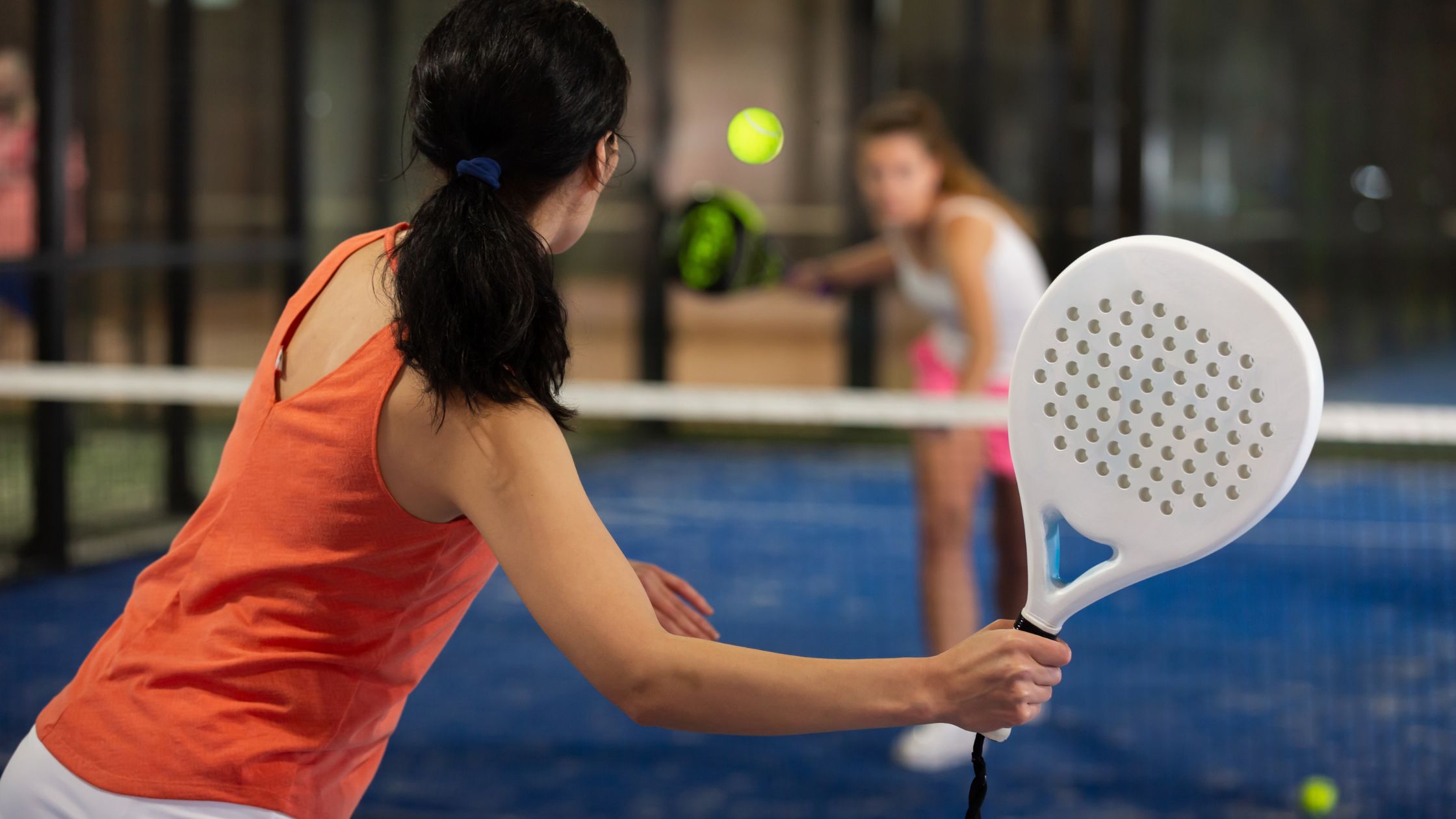16th Sep 2023
Pickleball v Padel
Pickleball and Padel are two distinct racquet sports, each with its own set of rules and equipment. Here are the key differences between the balls used in Pickleball and Padel:
Ball Size:
Pickleball: Pickleballs are larger and have a diameter of 2.87 inches (approximately 7.3 cm).
Padel: Padel balls are smaller, with a diameter of 2.6 inches (approximately 6.7 cm).
Ball Material:
Pickleball: Pickleballs are typically made of a hard plastic material, featuring holes (similar to a wiffle ball) to reduce speed and control gameplay.
Padel: Padel balls are made of rubber and are solid, providing a livelier bounce.

Bounce:
Pickleball: Pickleballs have a relatively low bounce due to their hard plastic construction and the holes on the surface.
Padel: Padel balls have a higher bounce due to their rubber composition, making rallies more dynamic.
Speed and Spin:
Pickleball: Pickleballs are generally slower and offer less spin control compared to padel balls.
Padel: Padel balls are faster and allow players to put more spin on the ball, resulting in more varied shot options.

Court Size and Rules:
Pickleball: Pickleball is played on a smaller court, typically half the size of a tennis court. It's often played as a doubles game, and the rules emphasize short volleys and quick exchanges.
Padel: Padel is played on a larger court, similar in size to a tennis court but with a surrounding wall. It's typically played as doubles as well, and the wall can be used strategically in gameplay.
In summary, while both pickleball and padel are fun and social racquet sports, they use different ball sizes and materials, resulting in variations in gameplay.
Pickleballs are smaller, slower, and feature holes for control, whereas padel balls are larger, faster, and provide a livelier bounce, allowing for different playing styles and strategies.
PADEL
Padel is a racquet sport that combines elements of tennis and squash and is typically played as a doubles game. The rules of padel can vary slightly depending on the governing body and local regulations, but here are the basic rules of padel:
1. Court Dimensions:
Padel is played on a rectangular court with a glass or wire mesh wall on all sides. The court dimensions are usually 20 meters in length and 10 meters in width. The service box is marked within the court, and there's a net in the middle.
2. Scoring:
Padel typically uses a scoring system similar to tennis. The game is played to 6 games, and a player/team must win by 2 games. The scoring terminology is as follows:
- Points are counted as 15, 30, 40, and game (similar to tennis).
- If both teams are tied at 40-40 (deuce), one team must win two consecutive points to win the game (advantage-in).
3. Serve:
The serve must be underhand, and it must bounce before hitting the ball. The server stands behind the baseline and diagonally opposite to the receiver. The ball must be hit diagonally into the opponent's service box.
4. Double Bounce Rule:
After the serve, both the serving team and the receiving team must let the ball bounce once before playing it off the walls. After that, players can volley the ball before it bounces.
5. The Walls:
The walls are in play, and the ball can be played off them. However, the ball cannot hit the walls directly on the fly without touching the ground first.
6. Service Faults:
A service fault is called if:
- The server misses the ball while attempting to serve.
- The ball hits the net and doesn't go into the opponent's service box.
- The server's foot crosses the baseline before making contact with the ball.
7. Service Order:
The team that wins the game serves first in the following game.
8. Faults:
Points are awarded to the opposing team in the case of various faults, such as:
- Allowing the ball to bounce twice before returning it.
- Hitting the ball out of bounds.
- Hitting the ball into the net or the walls above the net.
9. Let Rule:
If the serve hits the net and goes into the correct service box, it is considered a let, and the server gets another opportunity to serve without penalty.
10. Tiebreaker:
If the game reaches 6-6, a tiebreaker (often called a "super tiebreak") is played to decide the winner. It's typically played to 10 points, and a player/team must win by 2 points.
These are the fundamental rules of padel, but it's important to note that there can be variations in rules and scoring, depending on the region and the specific tournament or club. It's a fast-paced and exciting sport that combines strategy, skill, and teamwork.
PICKLEBALL
Pickleball is a fun and relatively easy-to-learn racquet sport played on a smaller court than tennis. Here are the basic rules of pickleball:
1. Court and Equipment:
- Pickleball is typically played on a rectangular court that's 20 feet wide and 44 feet long (6.1 meters by 13.4 meters) for doubles and 20 feet by 22 feet (6.1 meters by 6.7 meters) for singles.
- The net is hung at a height of 36 inches (91.4 cm) at the sidelines and 34 inches (86.4 cm) at the center.
- Players use solid paddles made of wood or composite materials, and a plastic ball with holes, similar to a wiffle ball.
2. Serving:
- The game begins with a serve, which must be made diagonally across the net to the opponent's service court.
- The server must stand behind the baseline and serve underhand.
- The serve must clear the non-volley zone (also called the kitchen), which is a 7-foot (2.13-meter) area on both sides of the net.
- The serve must land within the opponent's service court, and it must bounce once before being returned.
3. Double Bounce Rule:
- After the serve, both teams must let the ball bounce once on each side before volleying (hitting the ball without letting it bounce).
- Once the ball has bounced on each side, players can volley the ball or play it off the bounce.
4. Non-Volley Zone (Kitchen):
- Players are not allowed to volley the ball while standing in the non-volley zone (the kitchen) unless the ball bounces there first.
- You can enter the kitchen to retrieve a ball that has bounced in it but must immediately exit after hitting the ball.
5. Scoring:
- Pickleball uses a rally scoring system, meaning a point is scored on every serve.
- The first side to reach 11 points wins, but you must win by at least two points.
- In some variations, such as tournament play, games may be played to 15 or 21 points.
6. Faults and Out-of-Bounds:
- A fault occurs when a player violates the rules, such as failing to clear the net on the serve, stepping into the non-volley zone and volleying the ball, or hitting the ball out of bounds.
- A ball that lands on the lines is considered inbounds.
7. Service Rotation:
- In doubles play, both players on a team get a chance to serve, and the server's team must win the rally to keep serving.
- After a fault, the opposing team gets to serve, and the server rotates to the back of the serving team's side.
These are the fundamental rules of pickleball, and they provide the framework for an engaging and enjoyable game. However, it's important to note that there can be variations in rules, especially in recreational play, so it's a good idea to familiarize yourself with any specific rules or modifications used in your local pickleball community or tournament.
Uselful links

